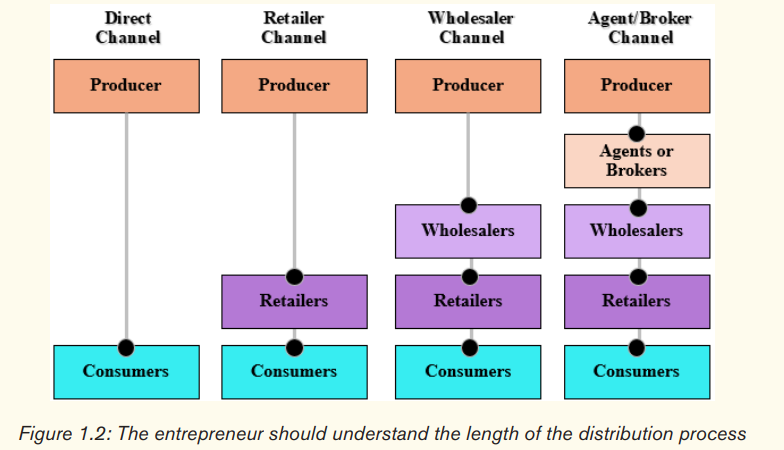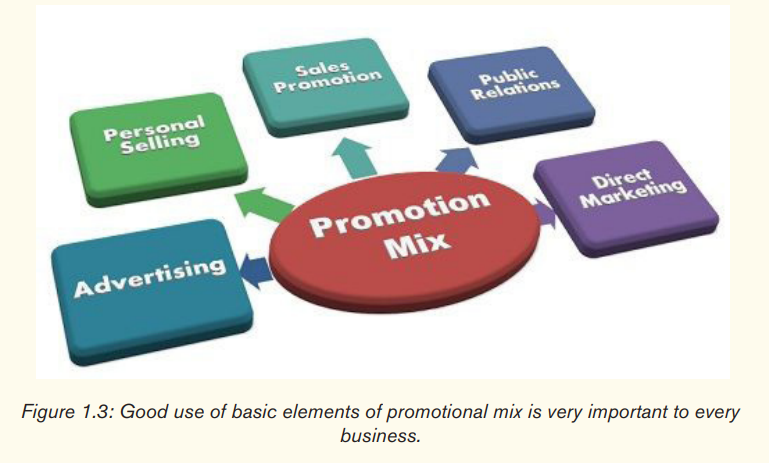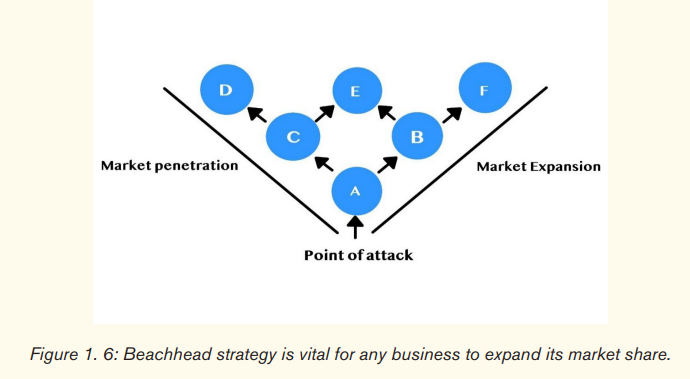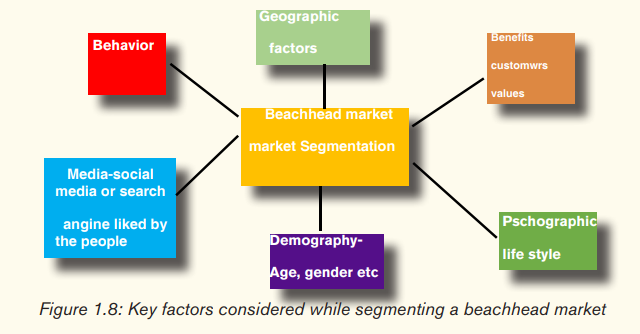UNIT 1: INTRODUCTION TO MARKET RESEARCH

Key unit competence: To be able to conduct a market research
Introductory activity
Read KANYARWANDA’s Case Study and answer the questions below. KANYARWANDA was a famous trader of maize flour in IMIHIGO village. He started a fruits’ shop straight away after realizing that the first business (maize flour) was successful. Two months later, the fruits ‘shop failed completely.
Questions.
a) Have you ever experienced a business failure similar KANYARWANDA’s fruits shop?
b) What do you think might have led to KANYARWANDA’s fruit shop failure?
c) What advice would do you give to KANYARWANDA before opening the fruits shop
1.1. Market research
Learning Activity 1.1
Read Kamaliza’s Case Study and answer the questions below. Kamaliza is a senior four students at UBWOROHERANE secondary school. After completing senior four entrepreneurship program, she decided to start a small orange juice processing business to serve restaurants located in UBUMWE village as the main market. Two years later, she starts thinking of introducing a new product to the market. She is asking herself many questions about the new product to launch, but the most important question in her mind is what she can do to ensure that the new product satisfies the customer needs.
Questions.
a) What should KAMALIZA do to assess whether the new product will satisfy the customers’ needs/market?
b) Why do you think it is very important for Kamaliza to gather information related to sales before launching the new product?
1.1.1.Meaning of market, and market research
A market is defined as any arrangement between the buyer and the seller involving the exchange of goods and services against money. A market may also refer to all individuals, institutions and other enterprise that buy goods or services of a particular kind. The development of the Internet, where almost all transactions are conducted online, added a digital market to the physical Entrepreneurship Experimental version Student Book| Senior Five 3 market. Businesses cannot successfully meet the needs and desires of all consumers, so businesses must focus on a group of consumers that can be differentiated. This process is called market segmentation.

Market research refers to the process of collecting and analyzing information or data related to the demand of a good or service in a particular market. Market research gathers information about consumers, competitors, distributors, within a firm’s target market. This is the process of determining the viability of a new product or service through research conducted directly with potential customers. Market research is a tool that helps to discover the target market and get opinions of the consumers about the product or service. The following is the step-by-step guide to market research:
• Define a business project before doing market research: Before doing market research, it is important to clarify the idea and define the project. At this stage, it is recommended to create a definition of the product or service that is as precise as possible.
• Test and improve your business idea before doing market research: After someone has got the ideas in writing, it is time to define the problems he/she wants to solve and the answers he/she wants to provide. This allows you to choose the research methods that are right.
• Choose a precise method for your market research: At this point, you can now filter out which analysis is to be carried out. They depend on the issues and opportunities identified in the previous steps.
• Analyze trends and the environment using PESTEL analysis
• PESTEL Analysis stand for Political, Economic, Social, Technological, Environment and Legal Environment.
After you have got your ideas down on paper, tested your idea using a prototype, and chosen the methods for your market research, it is time to get to the point. You will now turn to the question of market trend and environmental study analysis (also called PESTEL analysis).
• Data Collection and Interpretation: This is the crucial phase of your market research that could influence the success of your future business. It will enable you to come up with all the required information/ data. After gathering reliable data and interpreting it, you will come up with qualitative or qualitative research information.
• Synthesize the results of market research before the business plan: Once you have done your market research, you need to summarize the results to include in your business plan.
1.1.2. Importance of market research
Market research provides important information about the market and business landscape. It can tell the business owner how the business is perceived by the target customers. Market research can also play an important role in developing business products and services, bringing them to market, and marketing them to consumers. Here are some ways market research can support a business activity:
• Market research helps to reduce the risks involved with a new product because data obtained is used to assess with a degree of accuracy the likely chances of the new product achieving satisfactory sales.
• Market research helps a firm to improve their knowledge of consumers and competitors so that changing trends can be identified.
• Market research helps a business to predict its sales and make appropriate plans. If sales are expected to increase, production will be increased and reduced if sales are expected to reduce.
• To monitor the effectiveness of business activities. For example, a company that makes cooking oil may want to know the number of homes that use their product.
• Market research is used to gather data which can be used as a basis for market decision making.
• Market research is used to assess favorable designs, styles and packaging that consumers appreciate.
• It helps firms to identify competitors.
• Market research data provides explanations for product success or failure in the market.
1.1.3. Components of marketing mix
A marketing mix is often referred to as the “4Ps” of marketing i.e. Product, Price, Place and Promotion. It is a term used to describe all the activities which go into marketing a product.
To meet customers’ needs, a business must develop products to satisfy them,charge the right price, get the goods to the right place and it must make the existence of the product known through promotion. The components of marketing mix can be explained as bellow:
i) Product: A product is something that is offered to a market. A product can be tangible (a good e.g. a book) or intangible (a service e.g. insurance).
ii) Price: This is the amount of money paid by a consumer for a product. The fixing of a price level for a commodity is a vital component of marketing mix. Price has a great impact on the consumers’ demand for a product. If price is set too low, then the consumers may lose confidence in the quality of the product. If the price is too high, many consumers will not be able to afford the product.
Factors affecting pricing decision:
• Government influence: In some instances, the government may set prices, mainly for essential goods.
• Level of competition: Where there are many producers of a similar product, the price set will be in line with the competitors’ prices in order to compete with them favorably.
• Demographic factors: The decision to set a price of a product also depends on the number of potential buyers, location of customers, their economic strength and the expected consumption rate of buyers.
• Costs incurred: If costs incurred during the production process are high, then the final price will also be relatively high.
iii) Place: This shows how products move from the manufacturer to the final consumer. It refers to the channel of distribution that is used. The distribution process includes: manufacturers, wholesalers, service providers, retailers, marketing specialists and customers.
Intermediaries in the distribution process:
• Middlepersons: Refers to an independent business concern that operates as a line between producers and consumers or industry and consumers.
• Agents: These are wholesalers/retailers who do not own the goods they sell. Agents normally specialize by customer type or by product or by product line.
• Wholesaler: These are merchant establishments that engage in bulk buying, storing and physically handling the goods and sales of goods to retailers.
• Merchant middlemen: These engage in the buying of goods from the wholesalers and selling them to final consumers.
• Brokers: Are people who do not buy goods themselves but arrange deals between buyers and sellers.
• Below is the illustration of different distribution chains:

NB: The chain of distribution used depends upon the nature of the product to be supplied e.g. perishable goods suits direct channel while durable goods are suitable for agent channel.
iv)Promotion: This involves ways of attracting customers to buy products either for the first time or to buy more of them.

There are several forms of promotions that can be used by a business. They include the following among others:
• Advertising: This is the process of informing the public about the existence of goods or services through the use of the media such as: newspapers, radios, television, journals etc. Advertising can either be informative; that is the emphasis of advertising is to give full information about the product or it can be persuasive that is where emphasis is put on convincing customers that they really need the product and they have to buy it.
• Personal selling: This is one of the traditional forms of promotional tool wherein the salesman interacts with the customer directly by visiting them. It is a face to face interaction between the company representative and the customer with the objective to influence the customer to purchase the product or services.

• Public relations: The marketers try to build a positive image in the market by building relationships with the general public. The companies carry out several promotion relation campaigns with the aim of supporting all those directly or indirectly related to them. The public consists of customers, employees, suppliers, vendors, shareholders, government and society at large. Advertising is one of the forms of public relations that the company may use with the intention of bringing newsworthy information to the public.
E.g.: Some companies join hands with the government to clean up their surroundings, build toilets and support local government officials to achieve their missions.
Direct marketing: With the intent of technology, businesses reach customers directly without intermediaries or paid media. Emails, SMS, fax are some of the direct marketing tools. The companies can send emails and messages to the customers when they need to be informed about the new offers or the sales promotion programs. Thus, depending on the type of product and the overall goal of the business, the businesses can use any instrument of the promotion mix.
• Sales promotion: This refers to the application of various techniques to attract customers and increase sales. They include the following:
– Giving discounts or price reductions
– Free gifts for purchase of a product
– Self-service, where customers serve themselves
– Delivering a product to customers’ homes
– Use of fantastic music
– Attractive display of products
– Answering questions about the product and demonstrating the usefulness of the product
1.1.4. Importance of marketing mix in business activity
The core marketing mix fundamentals based on 4 Ps enhance the success of products by passing on the following benefits:
• Offering
Part of marketing is conveying to customers what you have to offer and why it is different and better than other alternatives. The product element is most obvious in the offering, since your product is what people buy. Where you offer it, whether in-store or online, is important, making the distribution element a factor. The price point is part of the overall offering, because it affects your product’s value.
• The target
When you market, you also have to strategize about who your target customers are. Your primary customer group becomes the target customers of your marketing campaign. Your product and price offer direction in identifying the right audience. For instance, cutting-edge mobile technology advertisements often are targeted to young consumers. Identifying the media used by these customers is also important.
• Message delivery
4ps enable the business to publish its brand loyalty through different promotional activities. You have to decide what messages and formats to use to persuade your target customers to buy. Humor, sexuality, fear and anxiety are all used to present emotional appeals in marketing. Selecting the right media within television, radio, newspapers, magazines, the Internet, billboards and other support media is another critical part of successful promotion.
• Value creation
In a general sense, the marketing mix allows you to understand how to build and sell value to your customers. Ultimately, customers buy what they perceive is the best value for their money in a purchase situation. Implementing marketing campaigns that show off great products at fair prices gives you an opportunity to succeed. Finding affordable marketing options also helps you get better return on your investment from marketing.
Value creation helps in the following ways;
• Ensures we get our goods and services to our customers effectively and efficiently
• Builds and maintains brand value and awareness
• Delivers profitable growth
• Builds customer value
• Enhances shareholder value
• Companies that focus on customers’ needs and deliver great customer experience are more successful than those that do not
Application activity 1.1
Z-shine is a business club established in UBUMWE school. Today, the business club is 5 years old, and it has been struggling to increase sales and profit levels respectively. Assume that you are invited by the club management to train club sales and marketing members on how they can interrelate the 4Ps of marketing in order for the club to increase its sales and profit. What will be entailed in your presentation?
1.2.Beachhead market
Learning Activity 1.2
Kamaliza needs to secure the place where she can locate her business. She hopes that once her business gains a dominant market share, it will have the strength to attack neighboring markets with different opportunities hence building a larger company. With a clear example, explain the technique that Kamaliza can use to secure a given place where she may gain a dominant market for her new product.
1.2.1.Meaning and characteristics of a beachhead market

If everyone says he/she loves your product but nobody buys, you probably made the mistake of satisfying multiple markets. You must focus on one beachhead market and de-select all others. Be the best in your beachhead market and don’t try to please everyone.
The term beachhead derives from a military strategy that advocates that as you approach enemy territory, you should focus all your resources on capturing a small frontier area that becomes a fortress area from which you can penetrate enemy territory
A beachhead market is defined as a small market with specific characteristics that make it an ideal target for selling a new product or service. The choice of market is based on the compatibility between the available resources, the product and the market itself. The market should help the company to achieve certain goals that will help it to penetrate other markets from the beginning.
For instance Niyonzima established a coffee shop in his community and later introduced roasted chicken which got preferred by a group of tax drivers who also convinced motorcyclist to consume it, this eventually enabled his business to earn a lot of sales from the coffee shop.
There are three characteristics that define a beachhead market:
• The customers within the market all buy similar products.
• The customers within the market have a similar sales cycle and expect products to provide value in similar ways. Sales cycles are predictable phases in which a company wants to sell its products or services to customers in a specific market segment. For example, if you are trying to sell scholastic materials, your buyer persona will be based on those in the education sector, as you are not going to put your efforts into researching what those in the transport sector like.
• Word of mouth takes place between customers in the market. Word of the mouth marketing (WOM marketing) is when a consumer’s interest in a company’s product or service is reflected in their daily dialogues. Existing customers serve as high-quality references for potential customers.
Example: A beauty salon that provides super beautification quality service is always recommended by its actual customers.

1.2.2. Steps considered while selecting beachhead market
Before choosing a beachhead market, you should first consider all potential markets for your product. Think big, creative and divide the whole market into groups with common characteristics.
The following steps are considered during beachhead market selection:
• Considering all the market segments: Systematically evaluate possible market segments for your idea. Select one beachhead market that gives you the best chance of success based on your ability to execute, your ability to enter the market, and profit potential.
• Narrowing down to major market segments: The next step is to narrow down the target markets to better reach their regular customers. These are the customers who use their products the most and spend the most money. Evaluate each market segment using the target market evaluation criteria. The evaluation criteria include your passion, your reputation, your competition, your competence, and your opportunity.
• Finding the beachhead market: After you have evaluated each of your candidate market segments against the target market evaluation criteria, you must choose your beachhead market. Make sure you weigh all five factors against each other when making your final decision. For example, you may have a market segment with a candidate who is a fantastic fit in terms of reputation, competition, skill and opportunity, but you just don’t have the passion for it. If you chose this market as a beachhead, your business start-up would probably fail. In other words, it is better to choose a beachhead market where you do reasonably well in all five ranking factors, rather than have three or four outstanding matches and one or two aspects very poor matches for your abilities.
1.2.3. Criteria to pick the right beachhead market
There are factors that determine the identification and selection of a beachhead market. These influence a lot in the process of beachhead market creation. They include the following:
• Segmentation for the beachhead market
It is very important to understand the composition of the population that forms the beachhead market. Collecting statistics on the financial capability of potential clients in the Beachhead market is a key factor. It is necessary to know whether the customers have the money to pay for the product.
• Product specification
When selecting a beachhead market, it is necessary to know the type of product going to be produced is addressing the specification that meets the needs of the clients. Product specification is a key factor in determining a beachhead market. Using the targeted customers to specify how they want the product to be is important.
• Customer profile
While determining the beachhead market, it is advisable to understand who your potential customers are. This will involve describing the customers’ characteristics. Study the demographics, age, and interests of the people. This is important because it helps in knowing best the marketing messages can be designed showing how the needs and challenges are to be addressed, therefore influencing them to purchase your product. When you find that there is a huge number of people having similar customer profiles to your interest, then, make it your beachhead market.
• Psychological segmentation
It is important to divide the potential customer groups into segments that determine purchasing behaviours, such as beliefs, social status, values, opinions, activities, and lifestyles. This calls for grouping potential customers into various segments which determines the purchasing behaviours.
• Market accessibility
This is a factor considered while selecting a beachhead market. Make sure that the region or area identified is accessible, and that customers are able to access the products to be produced.
• Word of mouth
Determine whether there is active mouth communication amongst the potential customers. This is very important because the expansion of a beachhead market depends on the references made by the clients within the beachhead market area.
• Strategic market
One of the factors to be considered while selecting a beachhead market is the area’s strategic position which offers undisputable chances of expanding the market to the nearby areas.
• Similar sales cycle
Ensure that the customers within the market have the same sales cycle and have high expectations of the product or services to yield value in the same way.
• Purchasing of similar products
The beachhead market must be composed of clients that consume similar products, therefore, providing a steady and reliable market. This is a factor that determines the choice of an area to be one’s beachhead market.
• Size of the market
This must be considered while determining a beachhead market. It is good to look at all the possible markets and narrow them down to one market area which is the best suitable one that can favour the business expansion. Later on, as the cash flows grow, the business extends to other markets as earlier predicated. This should be small enough to generate a very fast impact and influence cash flow.
1.2.4. Segmentation for beachhead market
The factors analyzed while determining the segmentation for the beachhead market are specific. However, it is very important to note that these have a close similarity with the criteria applied which determining the beachhead market. The difference lies in the purpose and application.
When a beachhead market is selected and created, now the business is operational. With time, the customers increase, and change in interests set in, therefore, the business owner begins to discover new data or information about the target audience. Therefore, this calls for designing targeted strategies capable of pulling more people who are already interested in the product. Hence, need for market segmentation of that particular beachhead market

Segmentation of the beachhead market is executed based on the following factors:
• Geographic: These relate to the location customers both in urban and rural areas. Therefore, within a beachhead market, the business owner divides the market into two categories composed of customers in urban or rural areas. These require varying marketing strategies and approaches.
• Behavioral: The business owner determines the brand loyalty level or traits of the people within the beachhead market. These include price sensitivity associated with the clientele. This therefore, compels the business owner to have differentiated marketing approaches that serve the differences existing in the area of operation.
• Psychographic: While segmenting the beachhead market, the lifestyles of the customers must be analyzed. These include interests, fashions, taste in Tech, and pop culture among others. Therefore, it is very important to understand the psychographics of your customers and start catering to the needs of individual clusters of your clientele that form your beachhead market.
• Demographic: The population dwelling with the geographical locus that forms the beachhead market, must be studied by the business owner. The parameters to be considered include age, gender composition, religion, income, educational levels, and socio-economic type such as family sizes associated with a given locality under the beachhead market.
• Media: This is another factor that influences the segmentation of the beachhead market. It is recommended that the business owner must understand the preferred social media used by the clients across the entire area within the limitation of the beachhead market.
• Benefit: This refers to customers’ values. This provides guidance on what customers value most. These include but are not limited to, preferring quality against rapidity, packaging standards. The disparities obviously influence the business owner to have smaller clusters with the beachhead market.

1.2.5. Importance of beachhead market
The beachhead market is of great importance to any business. Its importance includes the following:
• The beachhead market is used for start-up companies or companies looking to extend and diversify its product range to get a foothold on new markets by using small steps.
• There is easy flow of information about new products between clients because the market is small and manageable.
• Basis for market: When a company has identified specific and small market segment to sell to, it helps to focus on the segment it targets with a specific product or service. The beachhead market serves a base that helps the business grow to other potential markets.
• Better serve a customer’s needs and wants: By defining the beachhead market, the business can satisfy customer needs by offering the right product to their needs. Different forms and promotional activities are used based on the needs and characteristics of the particular beachhead.
• Manageable competition: When a company focuses on a small market, its competitiveness in the market increases. Which in turn leads to a higher return on investment (ROI). The company focuses on specific segments and learns everything they need to know about that segment in order to market their products to them.
• It serves as a strategy to penetrate a market with a new product or service.
Application activity 1.2
Think and decide on a business idea and an initial target market to pursue. Describe in two (2) short paragraphs the idea you will pursue, and the initial target market for that idea. Be sure to explain exactly how the customers benefit from your product/service.
Skills Lab 1
In groups, design a customer survey tool (a set of questions) that includes key information you may need to learn about customers, then visit your school canteen, business club or a nearby community business and data related to customer behaviours using the designed customer survey tool. Thereafter, present how important the information gathered will help you to start your own business.
End of unit assessment
Mahoro is an entrepreneur dealing in groceries in her local area. She provides fruits and vegetables to her customers. Having started the business with no prior information on that market; from the last three months, her customers started claiming that the quality of the greens she provides are always spoiled, she charges them higher prices and does not give discounts. Additionally, the only one supplier that she has, comes from very far away and that is considered to be one of the reasons why many of Mahoro’s products are always spoiled before sale and somehow expensive compared to those of her competitors. On the other hand, near Mahoro’s shop in the same centre, there are other dealers in groceries who provide varied quality fruits and fresh vegetables at affordable prices. They have fridges to keep their vegetables fresh and their suppliers are diversified to stock shortage. Mahoro’s competitors earn more income than her and she is now planning to carry out a research that can help her compete in the market.
Questions:
(i) What wouldyou advise her to incorporate in the research she intends to do?
(ii) What market research tips can Mahoro followto fit her groceries business?
(iii) Mahoro’s business might have been too ambitious to serve a larger market that is beyond their capacity. Advise Mahoro on the use of beachhead market approach for the success of her business.
